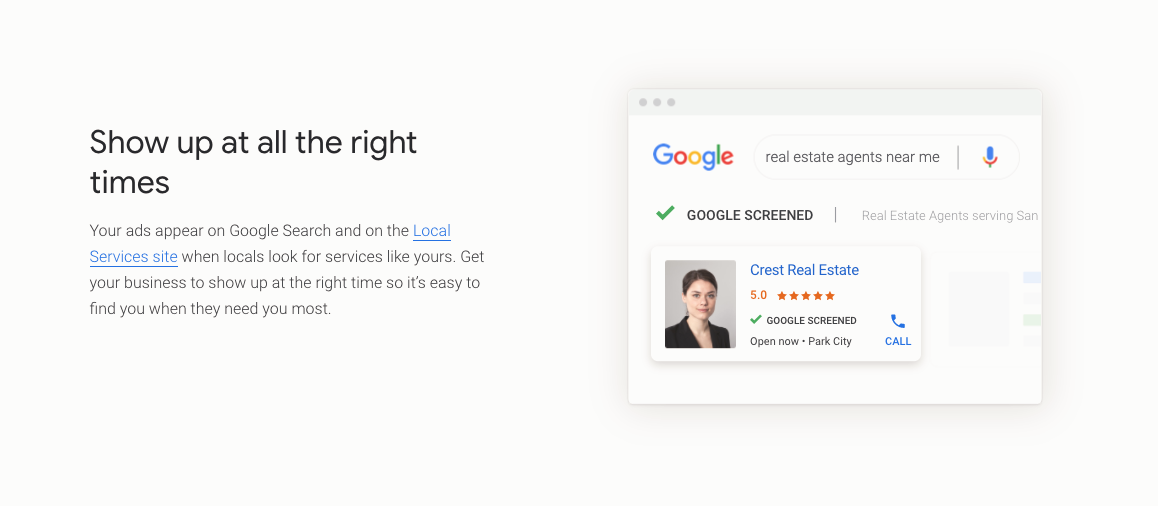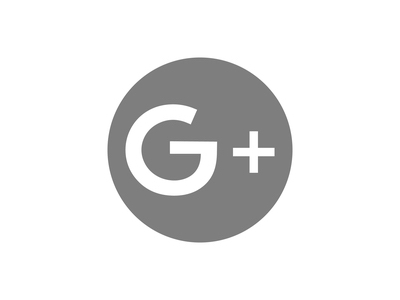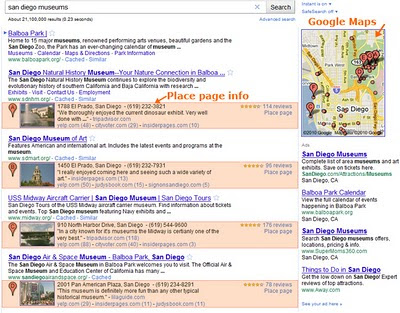It’s been a long while since we talked about Local Services ads for lawyers – in the time since then, Google has made a number of changes to this ad delivery method. Today, we want to tell you about how this exciting new platform can get your business in front of potential clients… right when they need you most.

Nashville Local Services Ads: A Primer
On their Local Services ads page, Google says that this approach will “get more leads and grow your business” – as a Nashville Local Services ad company, we agree. Here’s the rundown on how these Google ads work.
First, a person types their search into Google. If they’re looking for a service your business provides, your ads will show up. Pretty simple, right? It gets better. Google’s algorithm will only show your ads to customers in your service area, and on top of that, you only pay if they call you directly through the ad.
At a glance, the benefits of Local Services ads include:
- Get seen at the top of Google.
- Connect with customers who are looking for you (and more likely to book).
- Use the mobile app to communicate with customers anytime.
- Customers can call, message, or schedule a booking directly through your ad.
- A wide array of tools are available to help build out your profile.
- Only pay for the leads related to your services.
- Google Guarantee and Google Screened badges boost conversions.
- Only hear from customers who have chosen your profile.
- Get listed as a local provider on the Assistant.
A Badge of Trust
Recently, Google has introduced a new offering for your Nashville local service ad company. By becoming a Google Screened or Google Guaranteed provider, you will earn a badge for your listing based on your industry. This little checkmark works a lot like the “verified” badge on Twitter – it gives you extra credibility and increases the likelihood that customers will book your services.
Who is Eligible for Nashville Local Services Ads?
Thanks to some recent changes, a variety of businesses around Nashville will be able to promote themselves through Local Services ads.
Initially, Google was very conservative with the professions which were eligible for this ad delivery method. Their logic was that household services (and those which could help with emergencies) would, by nature, need high quality, hyper-localized results. Until May of last year, Local Services ads were only available for electricians, HVAC professionals, carpet cleaners, plumbers, garage door repair services, and locksmiths.
Today, in addition to the above, professionals and those offering these services can apply for Nashville Local Services ads.
Active now:
- Cleaning services
- Window cleaning services
- Criminal lawyers
- Water damage services
- DUI lawyers
- Siding services
- Tree services
- Lawn care services
- Air duct cleaning services
- Real estate agents
- Roofers
- Litigation lawyers
- Estate lawyers
- Pest control services
- Movers
- Malpractice lawyers
- Fencing services
- Personal injury lawyers
Coming soon:
- Appliance repair services
- Bankruptcy lawyers
- Videographers
- Tax services
- Financial planning services
- Chiropractors
- Towing services
- Architecture services
- Mechanics
- Window repair services
- Foundation repair services
- Interior designers
- Junk removal services
- Family lawyers
- Immigration lawyer services
- Labor lawyers
- Carpenters
- Event planning services
- Business lawyers
- Flooring services
- Countertop services
- Contract lawyers
- Photographers
Whether you are a lawyer, real estate agent, or someone who provides household repairs – roofers, appliance repairmen, and tree removal specialists – we strongly encourage you to work with a Nashville Local Services ad company to take advantage of this opportunity.
Do I Need a Nashville Local Services Ad Company?
Local Services ads have a host of benefits. As we’ve mentioned above, they solve one of the biggest pain points of online advertising: spending money on people who won’t hire your company. You don’t want to show your listings to people who are too far away to use your services or who are searching for something unrelated. This method has the potential to bring in a lot of new business for a relatively small monthly investment.
By hiring a Nashville Local Services ad company, you can be sure that your ads are properly calibrated. Agencies like Webconsuls work directly with you to understand what your business offers, how you can outrank the competition, and how to maximize your budget. We believe that most of digital advertising is smart money management, combined with constant ad tweaks, updates, and optimization.
For many people, Google Ads don’t work right out of the box. They may try a “set it and forget it” approach, which usually results in wasted money and minimal return. A professional Nashville local service ad company will continuously modify your ads based on performance. Additionally, we’ll suggest budgetary fluctuations and other strategies that can improve your results over time. These small changes add up to big results.
To learn more about Local Services ads, contact Webconsuls today. Our managing partners are happy to help you through the process of creating and optimizing your online presence.





















